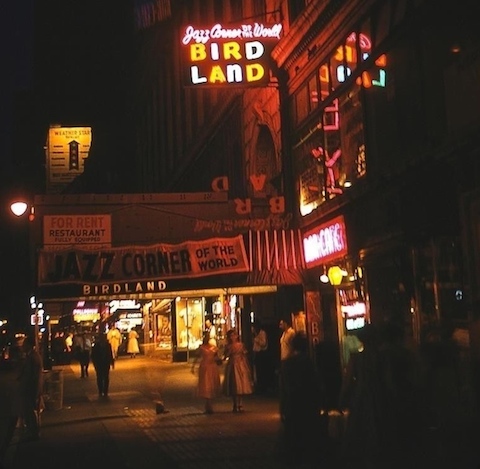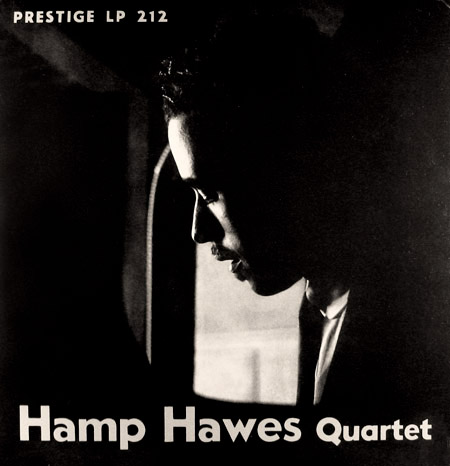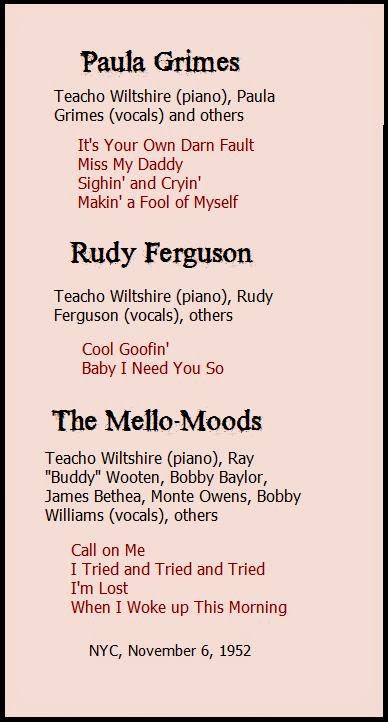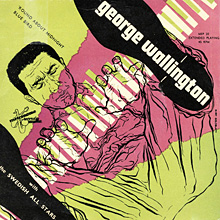My own 1952 on Prestige was full of wonderful surprises. I had never really listened to George Wallington or Teddy Charles. Or Hampton Hawes, who blew me away. I had never heard of Joe Holiday, and I loved his mambo jazz. I revisited King Pleasure and Annie Ross, two all-time favorites. I got reacquainted with the great Wardell Gray (and with his daughter, on Facebook), with Zoot Sims. I got to hear more of Sonny Stitt and Gene Ammons, and they continued to give pleasure. I heard the first recordings by the Modern Jazz Quartet (I'd played this one many times on vinyl), the first recordings of some of Thelonious Monk's greatest compositions, the first really extensive recording sessions by Billy Taylor.
I finished up my first four years of listening to Prestige Records, session by session, and came into 1953 ready to revisit old favorites and encounter new surprises. And my first 1953 session was very new, and very much a surprise.
My first thought in listening to this remarkable session of four original compositions was to wonder if Teddy Charles had been influenced by electronic minimalist composers like LaMonte Young. My chronology was a little vague, so I looked up Young, and discovered that if anything, it was just the reverse. Young, and Steve Reich and Philip Glass and Terry Riley, all came later, so if there was an influence--and I think there must have been -- it was in the other direction. My guess is that every avant-garde musician coming along in the 1950s listened to Teddy Charles's New Directions album.
I wasn't familiar at all with Hall Overton, so I did some research there, and found that he is most famous for orchestrating Thelonious Monk's piano compositions (Monk chose him for the job) for a groundbreaking Town Hall concert. But in the early 1950s, Overton was an incredibly influential figure, though virtually as little known then as he is now.
Did he influence electronic music? Well, as it turns out, yes. Steve Reich was a student of Overton's at Juilliard.
And so were Teddy Charles and Jimmy Raney. It must have been a thrill for Charles to make this album with his mentor, and he must have known he was about to go in even newer directions.
Almost all of what anyone knows about Hall Overton, beyond the Monk concert, can be found in a Internet article by Art Lange, written in 2009, because Lange was frustrated by the fact that basically, no one knew anything about Overton. So here, thanks to Art Lange, is what I know about Hall Overton (I do recommend reading his piece). He shared the weird and notorious 6th Avenue loft with David X. Wilson, which I've written about briefly before. Photographer W. Eugene Smith also lived at the loft, and (this and all subsequent quotes are from the Lange article, and you should really read the whole article):
Between 1957 and ’65 he made approximately 4,000 hours of surreptitious tape recordings at the loft, everything from hours of cats meowing and random street sounds to historically invaluable jam sessions, rehearsals, and conversations – most importantly, those in preparation for the Town Hall concert...the tapes of Monk and arranger/orchestrator Overton discussing the music and sounding out details at two pianos reveal just how much of a collaboration it was, and the intimate and thorough working relationship the two shared.Lange also gives a detailed description of the New Directions session, which is so much better than anything I could write that I'll quote from it at length here.
remarkable because they’re not really jazz, but constructions that explore new methodsI don't know that anything in jazz has ever been comparable. This music is mesmerizing, difficult, intellectual, and somehow straight to the gut. This from Prestige, the label that gave us hard bop, the early Miles, Sonny Stitt and Gene Ammons, King Pleasure and Annie Ross (and which started out with Lennie Tristano). This from Ed Shaughnessy, who spent 30 years providing rimshots for Johnny Carson and Doc Severinsen (and engaging in titanic drum battles with Buddy Rich). This is the vast richness of American music.
of organization from an improvisational perspective, equally informed by classical procedures. (You can’t call them Third Stream, Gunther Schuller wouldn’t coin the term for several years.) Though all four pieces are attributed to Overton, liner note annotator Ira Gitler said that one, “Metalizing,” was devised by Charles. None of the pieces “swing” in a conventional way; the rhythms are sometimes regulated by a snare drum pattern or predetermined melodic material, but for the most part jostle through freely phrased development of motifs, which provides momentum. Typically, the piano (Overton) and vibes (Charles) engage in complimentary linear counterpoint; in “Antiphony” their lines take on a modal cast, with the kind of large intervals favored by Webern and Eric Dolphy, and in “Decibels” the three-part interaction never resolves into a single-minded composition, but maintains its jazz identity as a trio conception. “Metalizing” includes timbral juxtapositions – the piano is pedaled so chords resonate, Shaughnessy focuses on cymbal washes, Charles switches from vibes to xylophone and glockenspiel to alter colors. Nothing in jazz was comparable at the time.
On Hall Overton's Wikipedia page, there's this quote from Overton about his music.
Since I am both a composer and active jazz musician, my work reflects both of these sources of musical experience. As a composer, my main interest has been in the exploration of non-systematic, intuitive harmony, both tonal and dissonant from which other elements—melody, counterpoint and form—can be derived. I am not particularly concerned whether this places me in the middle of the road, left or right. Or even if there is such a thing as a road to be on or off. There are only individual expressions for which we must find the right language. Some are good, some are bad. My attitude towards jazz is one of deep respect. Having attempted to master this difficult and exacting art for several years, with some small degree of success, I feel that I have come to know it in a way that is possible only through actually performing and creating in this idiom. Jazz has had a strong influence on my compositional style, but purely on a subconscious level. For I am opposed to the practice of trying to make jazz respectable through the unnatural imposition of classical forms or materials.
These were released on a 10-inch LP, New Directions, Vol 2, and then not again until a much later reissue with volume 1 as simply New Directions.
All these selections are on Spotify, and deserve to be listened to. They represent an important and influential direction in modern music. None are on YouTube.






























